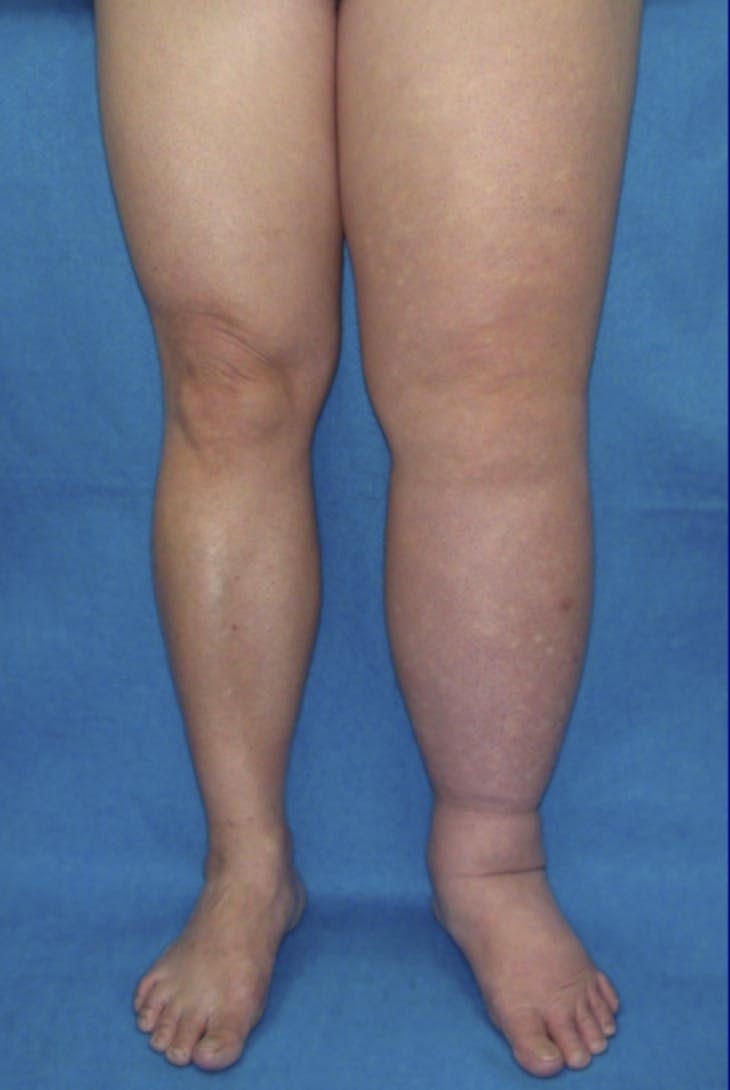One of the most important ways to help a patient in managing their condition is through education on prevention and therapy. Our trained therapists will help you understand how lymphedema occurs as well as proper precautions that can be taken to minimize swelling and other associated effects. A full evaluation must be completed before starting additional compression techniques to prevent swelling.
By developing an at-home plan for self-management, a patient can see much better results than just getting one massage. Home treatment components include compression garments, gradient compression bandaging, intermittent pneumatic compression devices, meticulous skin and nail care, and daily exercise. Maintaining a healthy weight can also help to manage symptoms.

STAGE 1

STAGE 2

STAGE 3

STAGE 4
What is Lymphedema?
Lymphedema is considered a long-term condition where excess fluid collects in the tissues of the body and causes extreme swelling. The fluid that circulates throughout the lymphatic system is called lymph. When excess lymph fluid accumulates, swelling occurs and often causes pain and discomfort such as feelings of heaviness or pressure to extremities.
The lymphatic system is vital in keeping the body’s immune system functioning properly. Your lymphatic system is a network of organs, cells, ducts, and lymph nodes that can be found throughout your body. Untreated lymphedema can lead to lymphangitis, or inflammation of the lymphatic system, which is a major component of your immune system. Lymphangitis can spread rapidly, which can lead to complications such as cellulitis, a skin infection, or sepsis, a bodily infection that can be life-threatening and requires immediate medical attention.
Lymphatic Drainage
Lymphatic drainage is a helpful process to maintain the lymphatic system in good condition for optimum health. The main purpose of the lymphatic system is to encourage the immune system to operate well during the normal process of cleaning and nourishing all the cells in the body, regardless of their function. A lymphatic system that is functioning poorly can adversely affect every part of the body. Lymphatic drainage techniques can mitigate the effects of unhealthy lifestyle choices and environmental pollutants that can compromise the immune system.
Lymphatic drainage is done through a combination of techniques that are specifically designed to stimulate the flow of lymph in the body. People may benefit from lymphatic drainage to treat a wide array of disorders, from edema (swelling) to wrinkles.
Lymphedema Causes
Hereditary, or primary, lymphedema is caused by genetic mutation. Hereditary lymphedema is a rare, inherited condition caused by problems with the development of lymph vessels in your body. Specific causes of hereditary lymphedema include:
Milroy’s disease is a disorder that begins in infancy and is caused by congenital abnormalities in the lymphatic system.
Meige’s disease (lymphedema praecox) is a disorder that often presents in adolescent years, around puberty, or during pregnancy, before age 35.
Late-onset lymphedema is the rarest form of hereditary lymphedema manifesting after the age of 35.
Lymphedema can have many causes. It commonly affects one or both of the arms or legs and can be both uncomfortable and sometimes painful. Some patients may experience swelling of the head, neck, chest, or genitals. When the lymphedema occurs in the head or neck, it can affect critical functions such as swallowing and breathing.
Secondary Lymphedema can have many causes such as infectious and inflammatory diseases as well as cancer or cancer treatments among others. With proper treatment, we can managed to reduce symptoms and discomfort.
Lymphatic Drainage Massage
Lymphedema Therapy Specialists utilize a variety of techniques designed to manage your symptoms, regardless of the specific or underlying cause of the condition. The treatment program begins with administering a manual lymphatic drainage massage, which is a series of guided, compressing, stretching, and cupping movements that are applied all over the body. The purposeful, light, rhythmic motions are done in a sequence to make sure that no lymph is trapped anywhere in the body. It is performed without using any massage oils.
The manual lymphatic drainage massage helps to stimulate the lymphatic systems without taxing the blood vessels so that the lymph moves easily through tissues and lymph glands.
This is quite different from a regular or spa massage. Many individuals incorporate lymphatic drainage massage into their wellness routines for its skin and organ detoxification benefits. Most people choose LDM to cleanse the body’s tissues during the change of seasons, after an illness or injury or following a particularly stressful time in life.
Lymphatic drainage massage is helpful to treat pain, digestive problems, hormonal imbalances, skin conditions, headaches, and much more. It has also been used post-surgery to flush toxins out of the body including anesthesia. LDM has been proven to be effective in treating lymphedema for almost a century.
